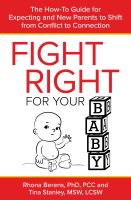Almost forty years ago, social scientists Richard Ryan and Edward Reci first published their cross-cultural findings on what they dubbed Self-Determination Theory (SDT), a theory that looks at both the external and internal factors that contribute to motivation. They were especially interested in intrinsic motivators—what they called three core human needs—the “why” of behavior that inspires people to self-initiate actions of one sort or another.
A couple of decades later a California-based educational researcher named Bonnie Benard published Resilience, a book that highlights the primary ingredients that contribute to young people’s ability to bounce back from adversity. She referred to them as three protective factors.
What does research on young people’s ability to overcome challenges and a theory about core human needs have to do with leadership? More—much more—than you might think.
In either a stunning coincidence or an important alignment between two different fields, Ryan & Deci’s work in combination with Benard’s findings offer a lens through which to better comprehend what helps most people thrive. The consonance between their research provides leaders—and organizations as a whole—guidance on how to motivate teams, and how to keep employees engaged.
While not a one-to-one match, SDT’s core human needs align remarkably well with Benard’s protective factors (R) as noted below:
Relatedness (SDT) <—> Caring Relationships (R)
Competence (SDT) <—> High Expectation Messages (R)
Autonomy (SDT) <—> Meaningful Participation & Contribution (R)
Relatedness is a core human need that provides a sense of belonging and affirms that others understand and accept you. Like caring relationships, a protective factor for resilience, relatedness is an antidote to isolation and an ingredient for building community and collaboration.
Competence centers on the belief that you are capable, that your efforts—and therefore you—are good enough, up for the task at hand. In Benard’s research, high expectation messages support competence, they are communication from those around you—in verbal, written, and sometimes nonverbal form, e.g., a thumbs-up or encouraging smile—that they believe you have the inner resources and wherewithal to achieve what you set out to do.
Autonomy is a core human need linked to being empowered to make your own decisions, while meaningful participation and contribution spark agency and resourcefulness, both of which enhance a sense of autonomy. (As an aside, Ryan and Deci’s research showed that countries with lower levels of autonomy exhibited higher rates of anxiety and depression.)
The synchronicities between SDT’s core human needs and resiliency’s three protective factors are striking. Also striking is SDT’s paradox between relatedness and autonomy, i.e., independence. Yet like the ubiquity of paradox in so many aspects of life—our everyday experiences, our values, our emotions—autonomy and relatedness only seem contradictory. People thrive, both personally and professionally, through an interplay between the two, and they likely suffer when one is either absent or far less present than the other.
How might all of this translate to the workplace and leadership in particular?
Viewed in combination, these six concepts—SDT’s core human needs and resiliency’s protective factors—provide a conceptual framework to support employees and help them grow when faced with task- or project-related challenges, as well as inter-personal problems in the workplace. These concepts also suggest a lens through which to investigate and potentially resolve any number of performance and teamwork issues, address employee dissatisfaction, and refine communication protocols within an organization.
As part of a strengths- and assets-based approach to leadership, these six factors emphasize the importance of:
- Facilitating both connection and independence among team members.
- Communicating to staff about competencies, both in response to their wins, as well as mistakes. This aligns with a growth mindset.
- Providing employees with opportunities to work independently and to have a degree of agency in designing or implementing their projects and work.
None of this means letting performance issues and poor communication slide. It means that SDT and resiliency factors might well contribute to better performance and more productive communication. It also suggests that a range of challenges with individuals and teams could be remedied or, at the very least, eased if these concepts were considered more closely.
For example, disruptions to team productivity might be dealt with more effectively and efficiently if you remain aware of the importance of relatedness and caring relationships. Seen through that lens, a decrease in productivity might reveal unresolved conflict among team members, or between employees and managers. Prioritizing conflict resolution could, in this instance, have a broad effect by improving team performance while also enhancing motivation, resilience and employee satisfaction at an individual level.
These six inter-related factors could also be shared with your team to enhance their understanding of their own fulfillment in the workplace with a view to enlisting their meaningful participation and contribution in improving their own performance and teamwork.
The same may also be true for you: If you’re struggling with job satisfaction, you too might discover that one or more of these factors benefit from refinement or increased focus.
Relatedness <—> Caring Relationships
Competence <—> High Expectation Messages
Autonomy <—> Meaningful participation and contribution
Whether they remain background concepts in your leadership toolkit, or strategies you consciously encourage in your team, SDT’s core human needs and resiliency’s protective factors provide new insights and better outcomes for you and those with whom you work.

Rhona Berens, PhD, PCC
Rhona is a Professional Individual & Relationship Coach who works with Leaders, Parents, Co-Parents, Couples, and Business Partners to increase relationship fulfillment and effectiveness in personal and professional Relationship Systems.
In addition to her work as a compassionate, fun and inspiring coach, Rhona is a skilled Speaker and Trainer. She delivers workshops to parents, birth professionals, educators, and teams. As an author, a recovering academic—Rhona was an Associate Professor at UC-Irvine for nine years—a former senior executive, and business consultant, Rhona brings a breadth of experience to her coaching.


